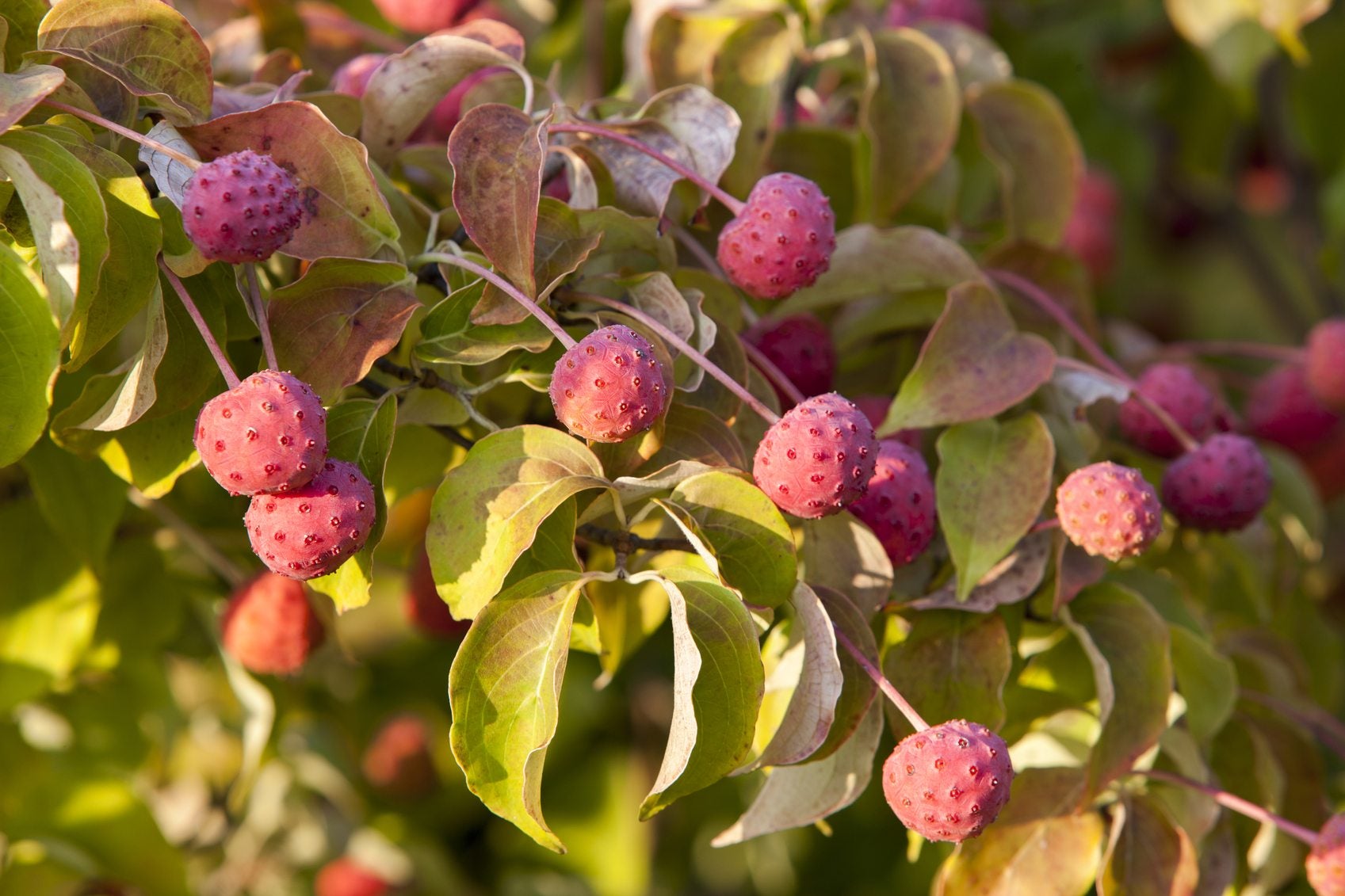Zone 4 Dogwood Trees – Planting Dogwood Trees In Cold Climates


There are more than 30 species of Cornus, the genus to which dogwoods belong. Many of these are native to North America and are cold hardy from USDA zones 4 to 9. Each species is different and not all are hardy flowering dogwood trees or bushes. Zone 4 dogwood trees are some of the hardiest and can bear temperatures of -20 to -30 degrees F. (-28 to -34 C.). It is important to choose the right species of dogwood trees for zone 4 to ensure their survival and continued beauty in your landscape.
About Cold Hardy Dogwood Trees
Dogwoods are known for their classic foliage and colorful, flower-like bracts. The true flowers are insignificant, but many species also produce ornamental and edible fruits. Planting dogwood trees in cold climates requires some knowledge of the plant's hardiness range and a few tricks to help protect the plant and help it survive some seriously cold weather without damage. Zone 4 is one of the coldest USDA ranges and dogwood trees need to be adaptable to extended winters and freezing temperatures. Cold hardy dogwood trees can withstand winters in zones as low as 2 in some cases, with suitable protection. There are some species, such as Cornus florida, that can only survive in zones 5 to 9, but many others can thrive in truly cold climes. Some trees that are planted in cold regions will fail to produce the colorful bracts but still produce lovely trees with their smooth, elegantly curved leaves. There are many hardy dogwood trees for zone 4 but there are also bushy forms, such as Yellow Twig dogwood, which provides attractive foliage and stems. In addition to hardiness, the size of your tree should be a consideration. Dogwood trees span heights from 15 to 70 feet (5-21 m.) but are more commonly 25 to 30 feet (8-9 m.) tall.
Types of Zone 4 Dogwood Trees
All species of dogwood prefer zones below USDA 9. The majority are actually perfect for cool to temperate climates and have remarkable cold resilience even when ice and snow are present in winter. The twiggy shrub-like forms are generally hardy down to zone 2 and would perform nicely in USDA zone 4. Trees in the Cornus family are usually not quite as hardy as the shrub forms and range from USDA zone 4 to 8 or 9. One of the prettiest hardy flowering dogwood trees is native to eastern North America. It is the Pagoda dogwood with variegated foliage and alternating branches that give it an airy, elegant feel. It is hardy in USDA 4 to 9 and remarkably adaptable to a range of conditions. Other choices might include:
- Pink Princess - 20 feet (6 m.) tall, USDA 4 to 9
- Kousa - 20 feet (6 m.) tall, USDA 4 to 9
- Cornelian cherry - 20 feet (6 m.) tall, USDA 4 to 9
- Northern Swamp dogwood - 15 feet (5 m.) tall, USDA 4 to 8
- Rough Leaf dogwood - 15 feet (5 m.) tall, USDA 4 to 9
- Stiff dogwood - 25 feet (8 m.) tall, USDA 4 to 9
Canadian bunchberry, common dogwood, Red Osier dogwood, and the yellow and red twig varieties are all small to medium sized shrubs that are hardy in zone 4.
Planting Dogwood Trees in Cold Climates
Many dogwood trees tend to send up several branches from the base, giving them a rather unkempt, shrubby appearance. It is easy to train young plants to a central leader for a tidier presentation and easier maintenance. They prefer full sun to moderate shade. Those grown in full shade can get leggy and fail to form colored bracts and flowers. Trees should be planted in well-draining soil with average fertility. Dig holes three times as wide as the root ball and water them well after filling in around the roots with soil. Water daily for a month and then bi-monthly. Dogwood trees do not grow well in drought situations and produce the prettiest visages when given consistent moisture. Cold climate dogwoods benefit from mulching around the root zone to keep the soil warm and prevent competitive weeds. Expect the first cold snap to kill leaves, but most forms of dogwood have lovely skeletons and occasionally persistent fruit, which adds to the winter interest.
Gardening tips, videos, info and more delivered right to your inbox!
Sign up for the Gardening Know How newsletter today and receive a free copy of our e-book "How to Grow Delicious Tomatoes".

Bonnie Grant is a professional landscaper with a Certification in Urban Gardening. She has been gardening and writing for 15 years. A former professional chef, she has a passion for edible landscaping.